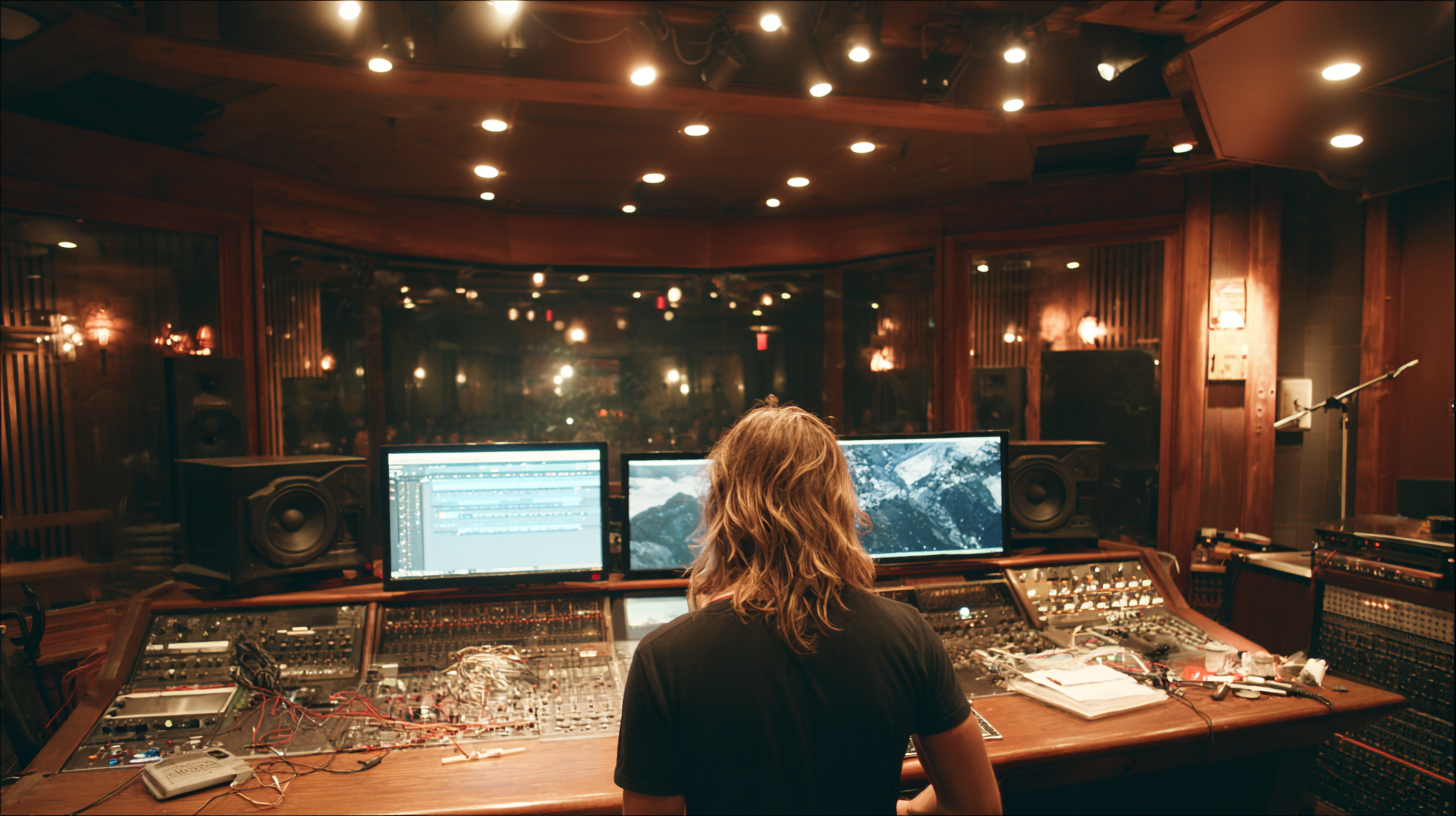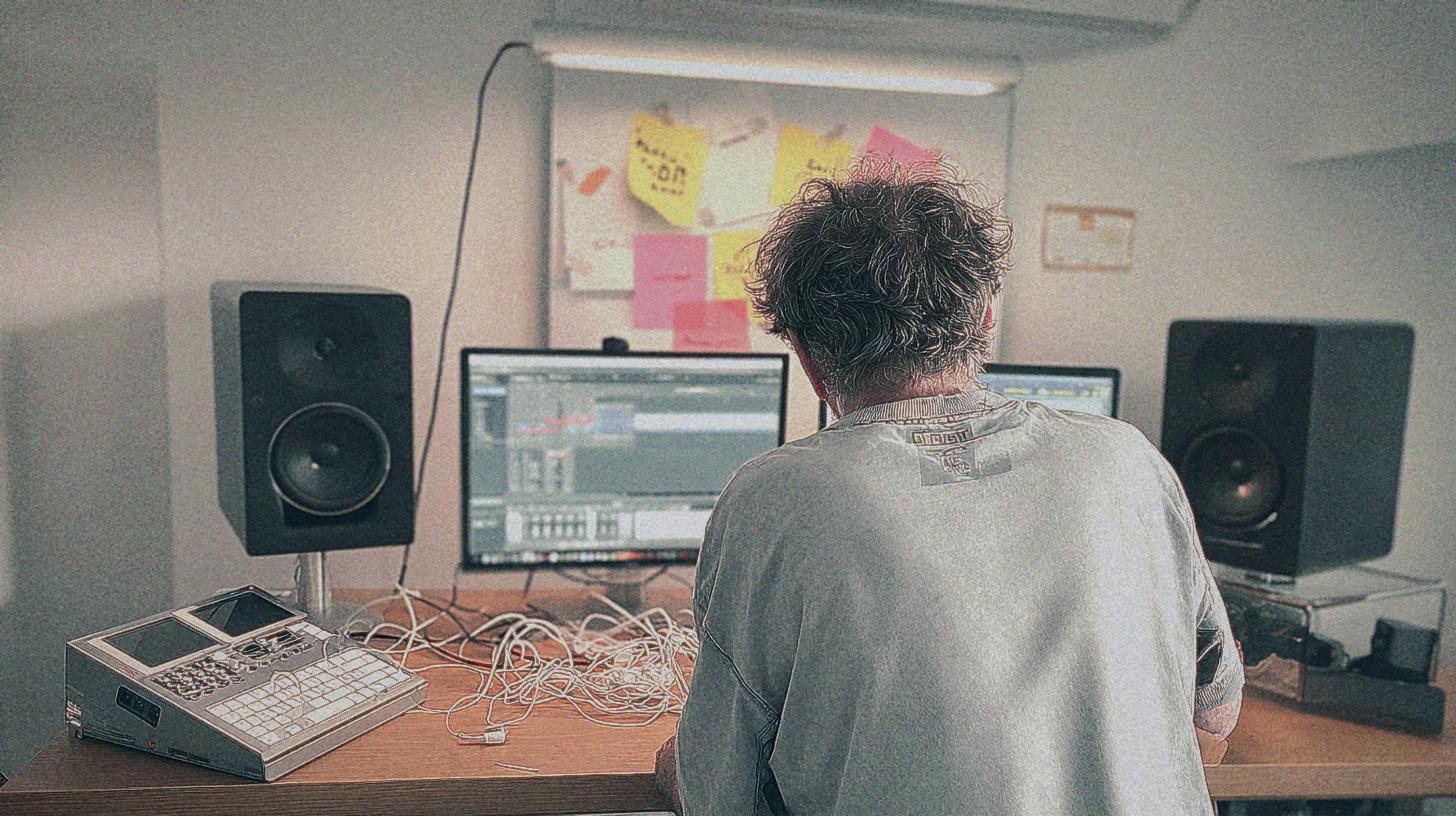
VST Plugins & Metal Mixing: Which Tools *Actually* Matter?
Nail The Mix Staff
Let’s talk VST plugins. They’re the digital lifeblood of modern metal production. From sculpting colossal guitar tones to making drums absolutely obliterate, these little pieces of software are everywhere. But with a million options out there and the dreaded “Plugin Acquisition Syndrome” (PAS) tempting your wallet, it’s easy to get lost. You see your favorite producers using a specific VST plugin and think, “That’s the secret!” But is it?
We’re gonna cut through the noise and talk about which VST plugins really move the needle in your metal mixes, and where you might be overthinking it. Because honestly, your skills and your ears are your most valuable assets, but the right tool for the right job can definitely make life easier – or harder, if you choose wrong.
When Your VST Plugin Choice is Mission-Critical for Metal
Look, sometimes, the specific VST plugin you pick absolutely matters. For certain tasks, especially in a genre as demanding as metal, some tools are just built different.
Nailing That Crushing Guitar Tone: Amp Sims are King
If you’re crafting modern metal guitar tones in the box, your amp sim choice is huge. Think about it: trying to get a djenty, Periphery-style chug out of a clean Fender Twin sim? You’re gonna have a bad time. Modern metal guitar production often hinges on amp emulations that capture the aggression and tight low-end of iconic high-gain amps.
- Specifics to Consider:
- Neural DSP Archetypes (Plini, Gojira, Nolly, etc.): These are insanely popular for a reason. They offer meticulously modeled amps, cabs, and effects tailored to specific artist sounds or styles. The Archetype: Gojira, for example, is brilliant for those massive, articulate rhythm tones.
- STL Tones (ToneHub, Will Putney, Howard Benson): Another powerhouse, offering a vast library of amp models and artist-curated presets. Great for finding very specific flavors.
- Bogren Digital (AmpKnob RevC, MLC Subzero 100): Jens Bogren knows metal tone, and his plugins reflect that with focused, mix-ready sounds. The AmpKnob RevC is a one-knob wonder for getting that Rectifier sound, fast.
- Positive Grid BIAS FX/Amp: Highly customizable, allowing you to dive deep into amp internals.
Remember, the amp sim is just one part. The quality of your DI signal, the pickups in your guitar, your playing dynamics, and especially your Impulse Response (IR) choice for the cabinet all play massive roles. But starting with an amp sim VST plugin designed for heavy music gives you a fighting chance.
Replacing or Augmenting Drums: Virtual Instruments & Triggers
Let’s be real: getting killer live drum recordings is tough and expensive. For many metal producers, virtual drum instruments and sample triggers are non-negotiable for achieving that punchy, consistent, and larger-than-life drum sound.
- Tools of the Trade:
- Superior Drummer 3 (Toontrack): The industry standard for many. Insane detail, massive library, deep editing. Want your kick to sound like it’s punching a hole in reality? SD3 can get you there.
- GetGood Drums (GGD): Created by metal musicians for metal musicians (Nolly Getgood, Matt Halpern). Their libraries are pre-mixed to sound fantastic in a metal context right out of the box. Think aggressive, modern drum sounds.
- Slate Trigger 2: If you have live drum recordings but the kick is flabby or the snare lacks crack, Trigger 2 is your best friend. Blend or replace existing drum hits with pro samples seamlessly. You can load your own samples or use their extensive library. For example, blending a tight, clicky sample underneath a live kick can add that modern metal definition without losing the original performance’s vibe.
Using these tools can mean the difference between drums that get lost in the mix and drums that drive the track with relentless power.
Surgical Problem Solvers: The Specialist VSTs
Sometimes, you encounter a very specific problem that a general-purpose tool just can’t fix elegantly. This is where specialist VST plugins shine.
- The Go-To Example: oeksound Soothe2
- Got harsh cymbal bleed in your overheads that’s making your ears bleed? Guitars have a nasty fizzy resonance around 4kHz that EQ can’t quite tame without making them sound dull? Soothe2 is a dynamic resonance suppressor that intelligently identifies and reduces harshness. It’s not a simple EQ; it’s like having a tiny, incredibly fast audio engineer riding faders on problematic frequencies. It’s a lifesaver for cleaning up dense metal mixes.
These types of highly specialized tools can be game-changers because they do one or two things exceptionally well, often in a way that’s difficult or impossible to replicate with standard EQs or compressors.
The “Whatever Gets the Job Done” VST Plugin Categories
Now, for a lot of bread-and-butter mixing tasks, the brand name on your VST plugin matters a whole lot less than your understanding of the underlying process. Your skills with a competent tool will trump owning the “latest and greatest” every single time.
EQs: Your Workhorse, Not Your Magic Bullet
Every metal mix involves a ton of EQ. From carving out mud in palm-muted guitars to adding air to vocals, EQ is fundamental.
- Stock vs. Fancy:
- FabFilter Pro-Q 3: Undeniably incredible. Its visual interface, flexibility (dynamic EQ, linear phase, mid-side), and precision make it a favorite for surgical tasks. Need to notch out a nasty snare ring at 780Hz with a super narrow Q of 20 and -12dB cut? Pro-Q 3 makes it easy.
- SSL-Style EQs (Waves SSL E-Channel, Brainworx bx_console SSL 4000 E/G, Universal Audio SSL E Series): These emulate classic console EQs and are fantastic for broader, more “musical” strokes. Boosting a high shelf at 10kHz by 3dB on a guitar bus for some sheen, or using the famous SSL “thwack” on a kick drum by boosting around 4-5kHz.
- Your DAW’s Stock EQ: Honestly? Most stock EQs these days (Logic’s Channel EQ, Cubase’s Frequency, Reaper’s ReaEQ) are incredibly capable. If you know what frequencies to cut or boost and why, you can get 95% of the way there with them.
The debate over whether Pro-Q 3 is “better” than your stock EQ for a simple high-pass filter on a bass guitar at 40Hz is mostly academic. Understand EQ principles, and any decent parametric EQ will serve you well.
Want to dive deeper into EQ strategies for metal? Check out our EQ Strategies for Mixing Modern Metal hub page.
Compressors: Taming Dynamics, Adding Punch
Compression is key in metal for controlling wild dynamics, adding sustain to guitars, making vocals sit upfront, and giving drums that explosive impact.
- Classic Flavors & Modern Workhorses:
- 1176-Style (Waves CLA-76, Arturia Comp FET-76, IK Multimedia Black 76): Known for its fast attack and aggressive character. Amazing for pinning down aggressive metal vocals, adding smack to a snare drum (try all-buttons-in mode for chaos!), or evening out a dynamic bass performance. A setting like Attack: 4 (around 800 microseconds), Release: 7 (around 50 milliseconds), Ratio: 4:1 can be a great starting point for punchy drums.
- LA-2A-Style (Waves CLA-2A, Universal Audio Teletronix LA-2A, IK Multimedia White 2A): Optical compressor, slower and smoother. Great for gently leveling vocals or adding warmth and sustain to a clean guitar or bass.
- Your DAW’s Stock Compressor: Again, perfectly capable for most tasks! Sidechaining your bass to your kick drum so the bass ducks slightly when the kick hits? Your stock compressor can do that just fine.
Knowing how attack, release, ratio, threshold, and knee settings interact is far more crucial than owning 15 different “character” compressor VST plugins. For more on taming those metal dynamics, visit our Metal Compression Secrets hub page.
Reverbs & Delays: Creating Space and Vibe
Even in aggressive metal, reverb and delay are essential for adding depth, dimension, and atmosphere.
- Types & Uses:
- Convolution Reverbs (Waves IR-1, Audio Ease Altiverb, Logic’s Space Designer): Use Impulse Responses (IRs) of real spaces. Great for realistic room sounds on drums (e.g., loading a “medium live room” IR for your drum bus) or unique ambiences.
- Algorithmic Reverbs (ValhallaDSP ValhallaVintageVerb, FabFilter Pro-R, Relab LX480): Generate reverb algorithmically. Perfect for lush vocal plates, epic snare verbs (think a 2.5-second decay plate with some pre-delay on a ballad snare), or creative, unnatural spaces. ValhallaVintageVerb is a community favorite for good reason – amazing sound, amazing price.
- Delays (Soundtoys EchoBoy, FabFilter Timeless 3, your DAW’s stock delay): From tight slapback delays on vocals to long, rhythmic delays on guitar leads, a good delay VST plugin is crucial. EchoBoy is renowned for its versatility and analog vibe.
Understanding how to use pre-delay to separate the dry signal from the reverb, EQing your reverb/delay sends (e.g., rolling off lows to prevent mud, cutting highs for warmth), and timing your delays to the song’s tempo will make a bigger impact than the specific brand of VST plugin.
The Real Enemy: Plugin Overload and Workflow Killers
It’s easy to fall into traps that hinder your progress more than help it. More VST plugins don’t equal better mixes.
“Plugin Acquisition Syndrome” (PAS): Chasing Shine, Not Skill
We’ve all been there. You see a top-tier producer use a particular VST plugin on a Nail The Mix session or a YouTube tutorial, and you think, “If I just had that plugin, my mixes would sound amazing!” So you buy it, use it a few times, and… your mixes are still kinda the same.
The truth is, it’s their skill and ears making those plugins sing, not just the plugin itself. You don’t need seven different emulations of an SSL bus compressor. Pick one, learn it inside and out. Master its sound, its quirks, and how it reacts to different material.
GUI & Usability: If It Fights You, Ditch It
Some VST plugins, despite being powerful, have user interfaces that are just plain confusing, cluttered, or unintuitive for you. iZotope Ozone, for instance, is an incredibly deep mastering suite, but its sheer number of modules and parameters can be intimidating for newcomers.
If a plugin’s GUI makes you scratch your head, slows down your workflow, or makes you second-guess your decisions, it’s not the right tool for you, no matter how many awards it’s won. Your workflow should be fluid. If you’re trying to quickly dial in some parallel compression on drums but the VST plugin has a million tiny knobs, hidden sub-menus, and an unreadable font, you’ll lose creative momentum. Find tools that feel intuitive to you.
Latency & Phase: The Silent Mix Killers
This is a big one, especially for metal producers dealing with high track counts and lots of processing.
- Plugin Latency: Every VST plugin introduces a tiny bit of processing delay (latency). Most modern DAWs (Logic Pro X, Cubase, Reaper, Studio One) have Automatic Delay Compensation (ADC) that should keep everything phase-aligned. However, it’s not always perfect. Pro Tools, historically, has been notoriously finicky with ADC, especially on complex routings with aux tracks and parallel processing.
- The Problem: If you have, say, a drum bus and a parallel compressed drum bus, and the plugins on one path introduce more latency than the ADC can perfectly compensate for, you’ll get phase issues. This can manifest as a weak, hollow sound, comb filtering, or a smeared transient response – all bad news for punchy metal drums. Some plugins, especially linear phase EQs or lookahead limiters, can introduce significant latency. Using one of these on an individual track within a multi-mic’d source (like one snare mic out of two) without ensuring identical processing or manual compensation on the other can be a recipe for phase disaster.
- EQ is Phase Shift: Standard EQs work by manipulating phase relationships. That’s how they boost or cut frequencies. This is generally fine and part of their sound. Linear phase EQs aim to avoid this phase shift, which can be useful on a master bus or when EQing correlated signals (like stereo overheads identically). However, they often introduce more latency and can sometimes sound less “natural” or have pre-ringing artifacts. Be mindful of where and why you’re using them.
Old-school Pro Tools users from the TDM days often developed mixing habits with minimal parallel processing precisely because the delay compensation was so unreliable. Things are much better now, but it’s still something to be aware of, especially if you’re pushing your DAW to its limits.

100+ Insanely Detailed Mixing Tutorials
We leave absolutely nothing out, showing you every single step
Your Sound is YOU, Not Your VST Folder
At the end of the day, the tools are just that: tools. Your unique perspective, taste, and skills are what shape your sound.
The Chef Analogy: Same Ingredients, Wildly Different Dishes
Give ten highly skilled metal producers the exact same raw DI tracks, the same drum samples, and only their DAW’s stock VST plugins. You will get ten completely different sounding mixes. Some might be aggressive and modern, others more raw and vintage-tinged. Why? Because it’s their individual decisions, their taste, their interpretation of the song, and their years of experience that create the final product. The plugins are just implementing their vision.
Stop Chasing “Unique”: You Already Are
A lot of producers worry about sounding “unique” or developing “their sound.” They get anxious if they’re using the same amp sim (like the popular Archetype: Nolly) as thousands of other guitarists. Don’t sweat it.
Even if you use the same VST plugin, your signal chain leading into it is different (your guitar, your pickups, your playing style, your DI box). Your settings within the plugin will be different. The Impulse Response you pair with an amp sim will be different. How you EQ it, compress it, and blend it into your specific mix, with your drums and your bass, will be inherently unique.
Your taste – shaped by all the music you’ve ever loved, your experiences, and even how your brain processes sound – is already unique. Focus on honing your skills: critical listening, understanding arrangement, mastering gain staging, learning the fundamentals of EQ and compression. As your skills grow, your unique musical personality will naturally shine through your work. You can’t help it; you are who you are.
The Nail The Mix Approach: Learn the Craft, Not Just the Tools
This is where Nail The Mix comes in. We believe that while knowing about specific VST plugins like FabFilter Pro-Q 3 or Slate Trigger 2 is useful, what truly elevates your mixes is understanding the why and how behind their application.
Imagine watching world-class producers like Joey Sturgis, Dave Otero, Will Putney, or Jens Bogren mix a real metal track from scratch, using these very VST plugins. You don’t just see them pick a preset; you hear them explain why they’re reaching for a specific EQ, how they’re dialing in that compressor to make the snare explode, and what they’re listening for as they tweak parameters on an amp sim. They’re not just using tools; they’re solving problems and making creative decisions in real-time.
This is the deep learning that translates into massive improvements in your own productions. It’s about understanding the craft of mixing, which allows you to get the absolute best out of the VST plugins you already own – even if they’re just stock plugins!
If you’re ready to go beyond just collecting VST plugins and start truly mastering the art of mixing modern metal, we’ve got something to help you cut through the noise and focus on what matters.
Unlock Your Sound: Mixing Modern Metal Beyond Presets – This is your chance to see how the pros make decisions and apply techniques that make records sound huge.
Final Thoughts: It’s Your Ears and Brain, Then Your VSTs
So, do VST plugins matter? Yes, to a degree. For highly specific tasks like amp simulation or surgical resonance control, the right VST plugin can be indispensable. But for the vast majority of mixing tasks, your skill, your understanding, and your creative vision are far more important than the brand name on the plugin.
Don’t let Plugin Acquisition Syndrome drain your bank account and distract you from what truly counts: dedicated practice, critical listening, and continuous learning. Master your workhorse EQs and compressors, understand their strengths and weaknesses, and choose specialist tools wisely.
Ultimately, the most powerful VST plugin in your arsenal is the one between your ears. Invest in your skills, trust your taste, and the heavy mixes will follow.
Get a new set of multi-tracks every month from a world-class artist, a livestream with the producer who mixed it, 100+ tutorials, our exclusive plugins and more
Get Started for $1




